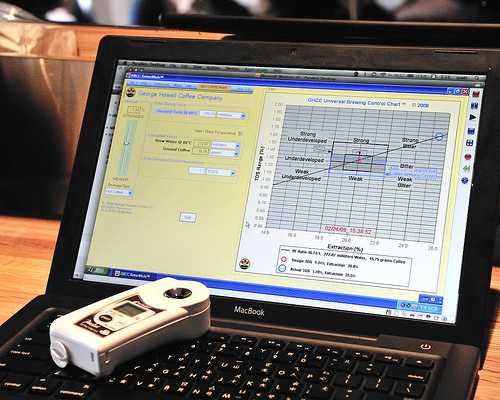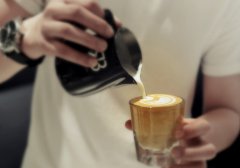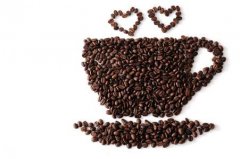SCAA Golden Cup Coffee extraction training Coffee how to brew the best?
How to brew coffee is the best, how to brew coffee is the best, today Brista Coffee West Point Training Institute will tell you the correct brewing and brewing requirements of coffee, baristas who have been working for many years know that the golden ratio of coffee brewing is [1:13.6-1:20]. Because this proportion range is the easiest to brew the good taste of coffee and extract the delicious part of coffee. This interval also meets the optimal extraction rate and the appropriate concentration is also known as the "Golden Cup Rule", which has always been recognized by coffee researchers as the extraction theory, until recent years, due to the advent of the magic extraction analyzer (ExtractMOJO), this "Golden Cup Rule" began to become popular, becoming the European and American fine coffee staff to study the extraction theory.

The earliest "golden cup rule" theory was proposed by Dr. Ernest Eral Lockhart, a chemist at MIT. He found that under the premise of fresh coffee, extraction rate and concentration are the two key factors that determine whether a cup of coffee tastes good. Then invite the public to try drinking, summarize the extraction rate and intensity that the Chinese like, this is the virgin version of the "Golden Cup Standard". Later, it was modified to formulate appropriate extraction standards. Norway, Britain and Brazil also used this theory as a blueprint to formulate "Golden Cup Criteria" that met their own preferences. Basically, there is a consensus among countries on the optimal extraction rate range, and the same standard of 18%-22% is adopted, but for the most smooth shade, each has its own preference.
One of the gold cup criteria: gold extraction rate of 18%-22%
According to Dr. Lockhart and Ringo, a senior consultant at SCAA(Specialty Coffee Association of America), the speed at which flavor molecules dissolve in hot water often varies with molecular weight and polarity in coffee extraction. Coincidentally, the low-molecular-weight flower and fruit acids, nuts and toast flavors in light and medium baking, as well as grain flavors and rice and wheat flavors produced at the initial stage of Mena reaction, will be preferentially dissolved, followed by the flavors of caramel, cream and chocolate in medium molecular weight, and then the flavors of high-molecular-weight resins, dark chocolate and caramel, which are mainly bitter, sweet and bitter, alcoholic, spicy and burnt.
70% of coffee beans are water-insoluble fiber, and soluble flavors account for only 30% of the weight of the beans. Therefore, the extraction rate is too high or too low, which means that too much or too little flavor extracted from the brewed coffee will affect the taste of the coffee. Therefore, when brewing coffee, if the extracted flavor, too much, if forced to extract all 30%, certainly excessive extraction, there will be no smooth bitter acid salty and bite throat feeling; if only 18% of soluble substances extracted below, it will be easy to extract insufficient, easy to have inactive dead acid and half-cooked grain taste and green feeling, make people uncomfortable. If the extraction rate happens to fall within the golden range of 18%-22%, the green and sour taste of the first extraction is just skillfully neutralized by the sweet aroma extracted immediately, and then the harmony of all tastes is achieved.
The main factors affecting extraction rate are brewing water temperature, extraction time, stirring force and roasting degree, coffee powder amount and grinding fineness. The higher the water temperature, the longer the brewing time, the harder the stirring or the deeper the baking degree, the higher the extraction rate. Otherwise, the extraction rate will be reduced, resulting in insufficient extraction.
It is worth mentioning that the relationship between roasting degree and extraction rate is that the lighter the roasting, the harder the fiber, the less difficult it is to dissolve, so it is necessary to use higher water temperature, longer brewing time or finer grinding degree to avoid insufficient extraction. On the contrary, the more deeply roasted coffee fiber is damaged, the softer it is, the easier it is to dissolve components. It is advisable to use lower water temperature, shorter time, or coarser grinding degree to avoid excessive extraction. Therefore, light to medium roast coffee significantly more than heavy roast, more withstand the intensity of extraction.
Important Notice :
前街咖啡 FrontStreet Coffee has moved to new addredd:
FrontStreet Coffee Address: 315,Donghua East Road,GuangZhou
Tel:020 38364473
- Prev

Professional coffee extraction training baristas must see courseware
Through 3 weeks of baristas' professional knowledge and learning how to make coffee, master coffee-making skills and work skills, so that students can fully understand the taste conditions of a cup of coffee and the factors that affect a cup of coffee. The quality of raw coffee beans accounts for 50%. The roasting level accounts for 30%, and the barista's skill accounts for 20%. (of course, some people may think that roasting accounts for a larger proportion, but no matter how good it is.
- Next

The Technology of making Coffee in siphon Pot for the first time
The coffee class I booked a week ago was broken by the sudden overtime. I hated the feeling that my plan had been disrupted. I had no choice but to rush to the subway to work overtime as soon as the class was over. I was really busy! Apart from the annoying thing of working overtime, the coffee class in the afternoon was really full. Although I was old and late by my speechless direction, I finally arrived.
Related
- Detailed explanation of Jadeite planting Land in Panamanian Jadeite Manor introduction to the grading system of Jadeite competitive bidding, Red bid, Green bid and Rose Summer
- Story of Coffee planting in Brenka region of Costa Rica Stonehenge Manor anaerobic heavy honey treatment of flavor mouth
- What's on the barrel of Blue Mountain Coffee beans?
- Can American coffee also pull flowers? How to use hot American style to pull out a good-looking pattern?
- Can you make a cold extract with coffee beans? What is the right proportion for cold-extracted coffee formula?
- Indonesian PWN Gold Mandrine Coffee Origin Features Flavor How to Chong? Mandolin coffee is American.
- A brief introduction to the flavor characteristics of Brazilian yellow bourbon coffee beans
- What is the effect of different water quality on the flavor of cold-extracted coffee? What kind of water is best for brewing coffee?
- Why do you think of Rose Summer whenever you mention Panamanian coffee?
- Introduction to the characteristics of authentic blue mountain coffee bean producing areas? What is the CIB Coffee Authority in Jamaica?

